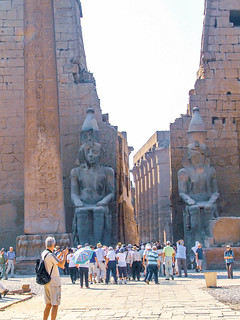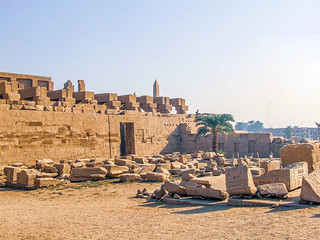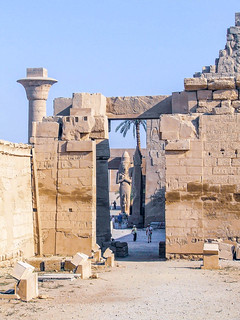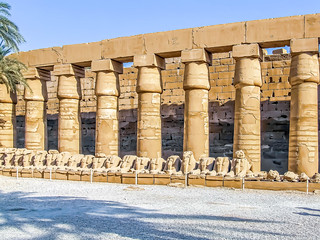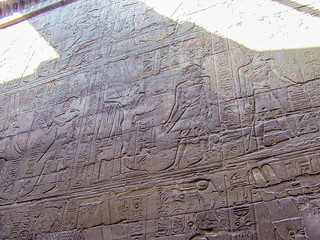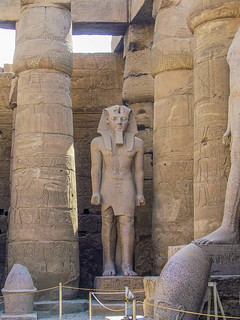About Luxor
The original part of the Temple of Luxor consisted of a large peristyle court and a complex of halls and chambers beyond. In one hall is a granite shrine of Alexander the Great. The great peristyle forecourt is surrounded on three sides by a double row of graceful papyrus-cluster columns, their capitals imitating the umbels of the papyrus plant in bud. An entrance flanked by the towers of a pylon was planned for the north end, but this design was altered, and, instead, the most striking feature of the temple, a majestic colonnade of 14 pillars, 52 feet (16 metres) high, was added. This colonnade, which also has papyrus-umbel capitals, may have been intended for the central nave of a hypostyle hall similar to that at Karnak, but the side aisles were not built; instead, enclosing walls were built down either side. Ramses II added an outer court, decorated with colossal statues of himself between the pillars of a double colonnade, and a lofty pylon on which he depicted festival scenes and episodes from his wars in Syria. In front of the pylon were colossal statues of the pharaoh (some of which remain) and a pair of obelisks, one of which still stands; the other was removed in 1831 and reerected in the Place de la Concorde in Paris.
When Thebes declined politically, Luxor remained the populated part of the town, which huddled around the Ramesside pylon. A Roman legion had its headquarters inside the 18th-dynasty temple, and Coptic churches were built around the temple and in the Ramesside court. In the Fa?imid period (909–1171), a mosque was built over the foundations of the church in the court; the mosque was dedicated to Sheikh Yusuf al-?aggag, a local saint who is reputed to have introduced Islam to Luxor. His feast is celebrated with a boat procession resembling an ancient rite, the festival of Opet, during which, on the 19th day of the second month, Amon was said to come from Karnak on his state barge to visit his other temple at Luxor, escorted by the people of Thebes in holiday attire. Reliefs on the walls of the great colonnade depict preparations for the procession of sacred barks during the festival.
www.britannica.com




